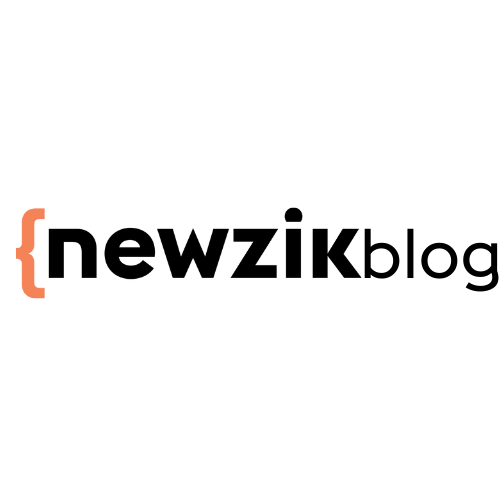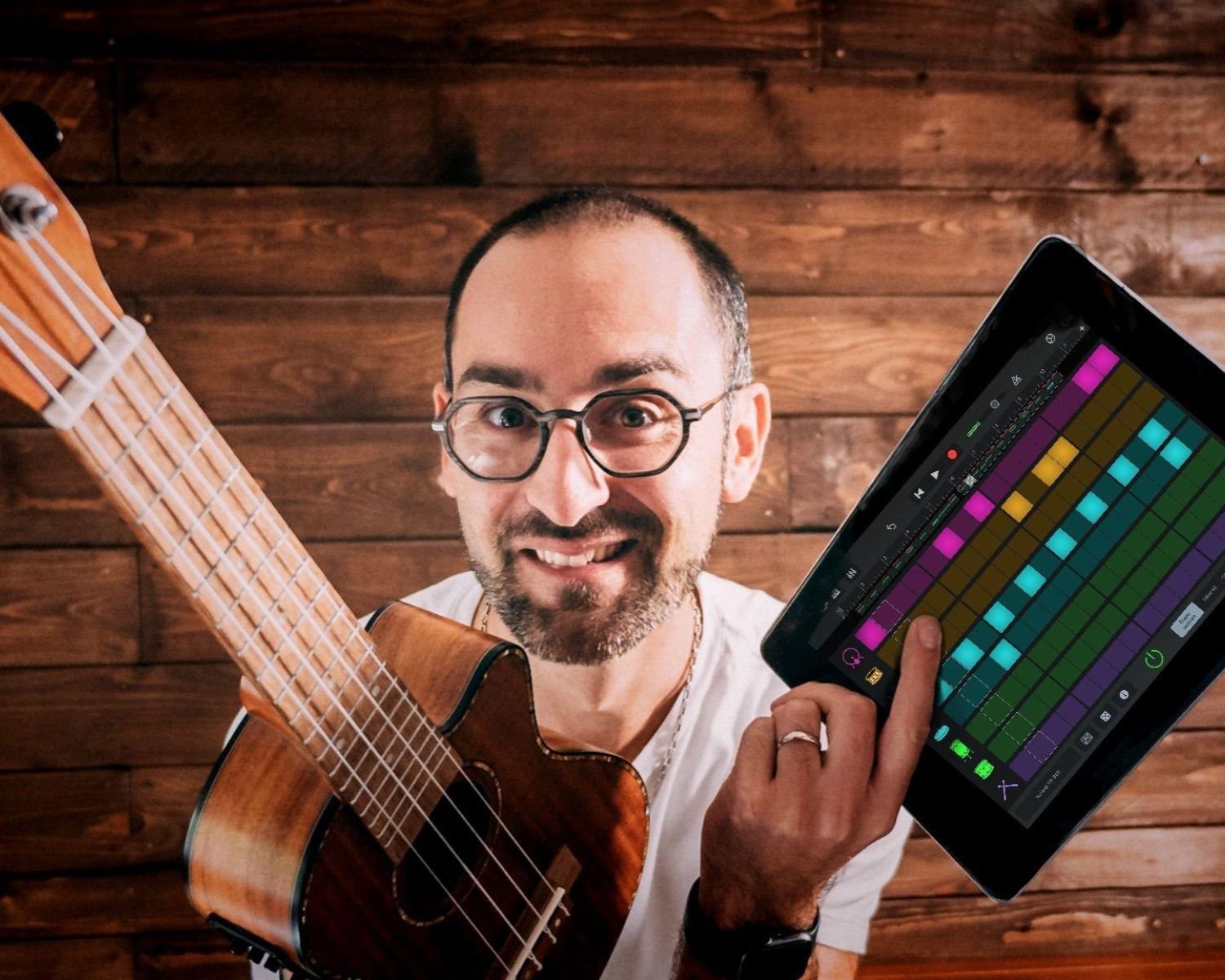digital sheet music at college: feedback
Nicolas Olivier is a music education teacher and trainer, passionate about new technologies and convinced that they can be used to enhance learning. His vision is to make digital technology fluid, accessible and relevant to teachers' pedagogical toolboxes. An avid user of the Newzik application, Nicolas Olivier tells us how it has helped him develop his teaching methods at secondary school!
How do you prepare a singing lesson using digital sheet music ?
As a music education and choral singing teacher, I don't teach musical notes. I do, however, use them on a personal basis to integrate them into the scores that I'm going to have my students sing, and possibly examples planned for my lessons.
The first thing I do is store the singing scores I'm going to teach my students in the Newzik application. And what I really like about the application is that it's multi-platform. It lets me import a score directly into the app when I find one on my phone, for example. And if I'm on my computer, I can also import a score with just a few clicks. And thanks to this, my scores are accessible everywhere at the same time, so I can work on them at any time. I also use the LiveScore.
This function allows me to have a reading of the score when you don't necessarily have an existing piece recorded. If I take works that don't have a recording available or that don't suit me, I can take advantage of these functions. This is useful if only for myself, so that I can play them back in my ears and work on them: identifying certain difficulties that I don't perceive when I read them directly with solfeggio method.
Is it useful to edit scores to prepare your lessons?
Of course, the crucial step in preparation is annotation. annotations. Here again, I love the multi-platform aspect of Newzik , because I can be on the metro looking at my score, listening to it and thinking that I need to pay attention to an interval, for example.
I can make annotations to indicate my phrasing, my breathing, and literally annotate my score as if I were adding ideas in a sketchbook. These annotations enable me to personalize a score, both in terms of interpretation and learning for the students, by underlining key passages.
What tips do you have for optimizing the preparation of singing exercises?
As a music education teacher, I'm looking to propose a vocal warmup in which I'll include the difficulties of singing right from this warm-up.
If, for example, I identify a rather complicated phrase on a score, I'll try to jot down on the side of my mind ideas for exercises to do at vocal warmup that will work on this difficulty. Another example: when I'm preparing my lessons, a student may introduce me to a K-pop song, because he listens to it a lot. If I find the piece interesting, I try to find a good score for it, or I create one myself. Then I import this score into Newzik and start working on it.
Initially, I rely on emotion. I hear a piece, and I think it's great for my class. This may be because I like the song, or because I see something interesting in it to explain to the students.
How to adapt to the national education program while stimulating students?
For example, to go back to what I was saying about K-pop, when I first heard the track Likey by the group Twice, I immediately identified in it a sort of quote from a Daft Punk track(Get Lucky). From there, I went on to record Get Lucky, created the score, then recorded Likey by Twice, and that enabled me to show the similarities. In this way, I was able to comply with an element of the French national music education program, which is called "creating one piece of music from another".
What's interesting is that the students know both the K-pop song and Get Lucky. So the choice of piece is going to be a hook for them. I try to use works that speak to the students so that I can take them elsewhere.
The next step will be to take them to Mozart or Debussy, for example. The idea is to start with a piece like Get Lucky or Likey and take them to composers from the world of art music or extra-European music, and explain to them that this process is not new.
Once they've understood the concept, I let them make a composition: they'll take an existing piece of music and either make another piece of music with it, or create a cover. Variation, match-up, mix, sample, etc.: they will choose one of the techniques studied and create their own music from existing material.
Do you use techniques other than music selection?
Another technique I use is to start with a piece that will emotionally surprise the students. The effect of surprise will captivate them. I also use applications. I'm thinking in particular of the Launchpad application or the GarageBand application, which are the two applications I use a lot in class to make music.
I use Launchpad to launch music loops. I show the students how David Guetta works on his tracks and explain the compositional keys that will enable them to create intelligible music. The appeal of the application and the sounds that are integrated into it engage them enormously. This is particularly the case for my sixth form students. They're equipped with iPads this year, and ever since I installed the application and showed them how to do it, I've been getting nothing but e-mails from them with their tunes. And they're really into it: after they've done their homework, they send me more.
Some of my students' older brothers and sisters come back to me, pointing out features I haven't seen in the application. They have time to use it at home. GarageBand is an application that lets you play a virtual instrument for real, and also edit multiple tracks to edit audio and record your own sounds.
I use these applications to get them playing virtual guitars, pianos and drums in sync. The students have the direct impression of creating their own music as a group.
Do students work on their iPad music lessons remotely?
No, I make sure that the exercises are only practiced in class. But the students are so motivated by the musical work on the iPad that they do it themselves at home. I organize my class time so that we sing, listen and create. Sometimes the order isn't the same, but I make sure they can do their exercises in class. Typically, in 6ᵉ, they'll really work at home because they're motivated. In 5ᵉ sometimes too. And from 4ᵉ, 3ᵉ, they try rather to optimize class time because it engages them a little less. It's normal, it's the age!
Has using the iPad changed the speed at which students learn?
Yes, completely, it changes everything. Before, with the sixth graders, things progressed very gradually from one lesson to the next. Today, once the students have got to grips with the applications and follow the instructions, 90% of them have finished their homework within a week. And in class, we can move on and test other exercises. So, in fact, we're going even further.
Is the next step to test Newzik in your choir classes?
Yes, that's for the next stage. Right now, I'm preparing all the singing guides and scores for the different voices: Soprano, Alto, Tenor, etc. for the students. I use LiveScore, so that the students can find all the scores in the application.
For example, the alto student who opens his score will have the instrumental on its own, with the LiveScore voice guide (and mine), and he can practice with or without the other voices. I'll also add the other voices. The idea is that all the voices can practice singing at the same time, with the other voices (or not) in their ears, to work on polyphony!
🎶 Need to proofread, annotate and share sheet music with your students in class? Teach them to become true maestros with the Newzikthe tool that's revolutionizing music learning!

